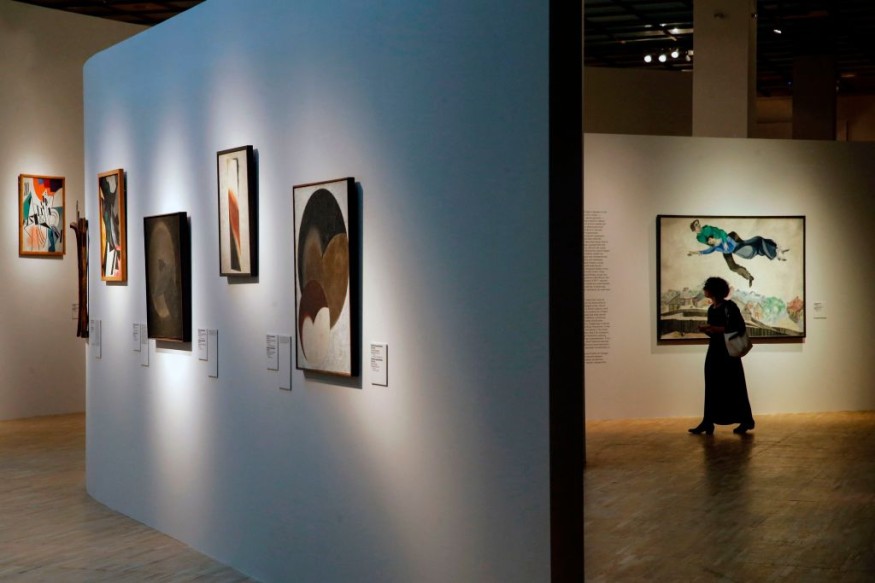Higher School of Economics (HSE) School of Psychology recently conducted a study about the impacts of various cultures on how people perceive and evaluate creativity. In Russia, for example, it was found that the more unusual symmetry of images has, the more creative it is. Meanwhile, most of the people from the United Arab Emirates believe otherwise.
Impact of Culture in Creativity and Art

A picture taken on September 27, 2017, shows a woman walking past Marc Chagall's "Over the town" during the media preview of the exhibition titled "A certain 1917" at the Tretyakov Gallery. From elegant portraits of aristocrats to scenes of protesters waving red flags, a major new exhibition of Russian art from 1917 that opened in Moscow on September 28, 2017, evokes the social turmoil of the revolutionary year.
Culture specifics, according to the new study, is among the significant factors that determine how people evaluate the expression of creativity in other groups. Previous studies found that many people are most likely influenced unconsciously by their cultures as they perceive and process creative works. Because of the substantial contribution of culture, the evaluation of a certain creative product is affected.
However, the detailed phases of how creativity is being assessed through the influence of culture are still in question. To find the reason for how it works, experts from the HSE University carried out a comprehensive study. The research is part of a wider project led by the Human Captial Multidisciplinary Research Center.
Part of the study included the utilization of Thomas Ward's Structural Imagination Test. The experiments were made possible through the help of participants from the HSE University and the American University of Sharjah (UAE). The participants were asked to imagine and draw other lifeforms living on a different planet.
The drawings were evaluated by selected juries from both institutes. The Russian group had 53 members between 17 to 20 years old. The Emirati group had the same number of participants between 17 to 26 years old.
The jury was to score the images on a scale of one to five. In the assessment, 100 drawings were presented. The images were analyzed using the following attributes - bilateral symmetry, two eyes, and four limbs.
The Russian jury gave high scores compared to their Emirati counterparts. The scores were given regardless of the creator's nationality and background. Statistically, Russian drawings were given an average score of 3.12 from the Russian jury and 2.54 from the Emirati jury. The scores of Emirati drawings scored 2.33 and 1.94 from the Russian and Emirati juries, respectively.
Creativity Evaluation Unconsciously Driven by Culture Differences
Data from the research shows that the scores given by the jury were influenced based on how the creatures were expressed. Most of the time, Emirati students drew the images based on the categories given. The UAE group perceived that the drawings were less appealing if they had unusual forms, leading them to give a lesser score. Russians, on the opposite, considered unfamiliar drawings as more creative the more they distanced from the standard terrestrial features of animals and humans.
Social science and psychology expert Anatoly Kharkhurin, who also authored the study, said in a EurekAlert report that the results provide strong evidence of the variances of cultures when it comes to art. The expert said that western cultures are more fond of innovation and originality in creative artworks, but eastern cultures prefer value aesthetics and authenticity of the creation.
Although there have been a lot of differences throughout the scoring phase, UAE students highly evaluated the drawings from the Russian group. Experts believe it is due to the universal rule of aesthetics in the artwork.
The study was published in the journal Frontiers in Psychology, titled "Cultural Variations in Evaluation of Creative Work: A Comparison of Russian and Emirati Samples."
Check out more news and information on Psychology in Science Times.
© 2025 ScienceTimes.com All rights reserved. Do not reproduce without permission. The window to the world of Science Times.












